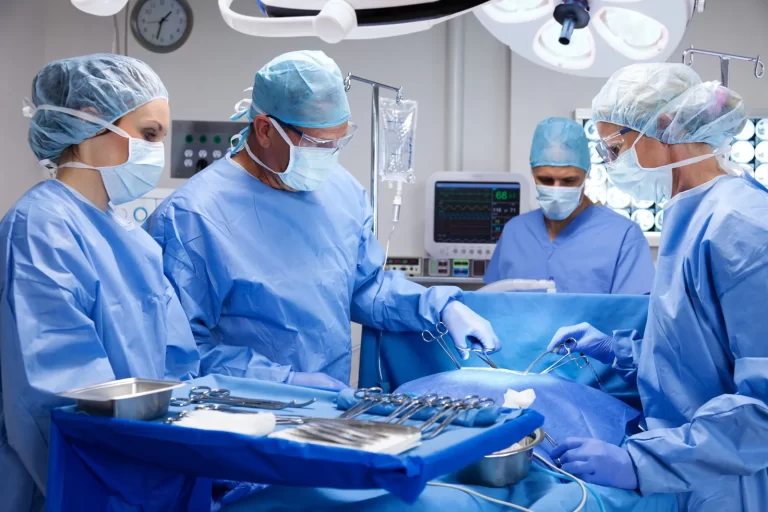Vaginoplasty: Understanding Types, Procedures, and Aftercare
Posted on: May 2, 2024
Key Takeaways
- Vaginoplasty preparation involves thorough consultations with your surgeon to understand the best approach for your body, highlighting the importance of personalized medical advice.
- Knowing the different types of vaginoplasty, including reconstructive and cosmetic variations, allows patients to make informed decisions about which procedure aligns with their health goals and personal desires.
- Understanding the vaginoplasty procedure, including what happens during surgery, helps demystify the process and can reduce anxiety for those considering this surgery.
- Post-surgery recovery and aftercare are crucial for a successful outcome; following your surgeon’s advice on rest, wound care, and follow-up appointments is essential.
- Being informed about the potential costs and insurance coverage for vaginoplasty can help patients plan financially for the surgery and avoid unexpected expenses.
- This comprehensive overview connects directly with individuals considering vaginoplasty, offering them actionable insights and relevant information to assist in their decision-making process.
Preparing for Vaginoplasty
Patient Assessments
Before undergoing vaginoplasty, comprehensive assessments are crucial. These evaluations ensure that patients are both physically and mentally ready for the procedure. Health professionals often require a series of tests, including blood work and psychological evaluations. They aim to identify any potential risks that could complicate surgery or recovery.
Patients must discuss their medical history in detail. This conversation helps surgeons tailor the procedure to each individual’s needs. By doing so, they maximize the chances of a successful outcome.
Hair Removal
For AMAB (assigned male at birth) individuals, genital hair removal is a necessary step before vaginoplasty. This requirement helps prevent complications during and after the surgery. The process can take several months to complete, as it typically involves multiple sessions of laser hair removal or electrolysis.
Starting hair removal early in the preparation phase is essential. It ensures the area is ready by the time of surgery. This preparation reduces the risk of hair growth within the newly constructed vaginal canal, which could lead to discomfort or infections.
Risk Education
Understanding the risks and benefits of vaginoplasty is vital for all patients. Surgeons provide detailed information about what to expect from the surgery and recovery process. They also discuss strategies to minimize complications.
Education on postoperative care is equally important. Patients learn about necessary lifestyle adjustments and follow-up care requirements. This knowledge empowers them to actively participate in their recovery, leading to better outcomes.
Understanding Vaginoplasty Types
Gender Affirmation
Vaginoplasty for gender affirmation transforms male genitalia into a vagina. Surgeons use tissue from the penis and scrotum to create the vaginal canal and labia. This type aims for a functional and aesthetically pleasing result. Patients seek it for gender congruence.
The process involves intricate techniques to ensure sensitivity and sexual function. The outcome focuses on both appearance and utility, providing transgender women with confidence in their gender identity.
Injury Repair
Injury-related vaginoplasty addresses damage from accidents, childbirth, or medical conditions. It repairs tissues, restoring structure and function. Surgeons tailor these procedures to the specific injuries, often using the patient’s own tissue for reconstruction.
This type prioritizes restoring normalcy and comfort. It can alleviate pain, improve sexual function, and correct aesthetic concerns caused by trauma or surgical aftermaths.
Congenital Correction
Congenital abnormalities like MRKH syndrome require vaginoplasty to create or reconstruct a vagina. These surgeries offer individuals born without a fully formed vagina a chance at normal anatomical function.
Techniques vary but may involve grafting skin or using dilators to develop vaginal depth gradually. The goal is functional anatomy that allows for sexual activity and, in some cases, menstruation.
The Vaginoplasty Procedure
Surgical Steps
The vaginoplasty procedure begins with tissue removal. Surgeons carefully excise unwanted or excess tissue to prepare for the vaginal reconstruction. This step is crucial for shaping the final appearance and function of the vagina.
Next, reconfiguration takes place. Here, the remaining tissues are sculpted and positioned to create or enhance the vaginal canal. This process requires precision and expertise to ensure natural-looking results.
The final stage involves the creation of vaginal structures. Surgeons may use grafts from other body areas or synthetic materials to form a new vaginal lining. This part of the procedure is essential for achieving a functional vagina that can support sexual activity and, in some cases, childbirth.

Duration Variability
e surgeries last several hours due to their complexity. The exact time depends on the patient’s specific anatomical needs and the extent of reconstruction required. Longer procedures often involve more detailed work to secure loose tissue or reduce the size of the vaginal opening, tailored to each patient’s goals.
Technical Aspects
Securing loose tissue and reducing the vaginal opening size are key technical aspects of vaginoplasty. These steps are customized based on individual needs, ensuring a personalized approach to surgery. Surgeons employ various techniques to achieve these objectives, focusing on safety and effectiveness.
Recovery and Aftercare
Post-Operative Symptoms
After a vaginoplasty, patients typically experience swelling, bruising, and discomfort in the surgical area. These symptoms are normal and part of the healing process. To manage swelling, it’s crucial to apply cold packs and keep the area elevated as much as possible. Over-the-counter pain relievers can help alleviate discomfort, but it’s important to avoid aspirin as it can increase bleeding risks.
Bruising should gradually improve within a few weeks. If scarring occurs, most scars will fade over time but may not disappear completely. Using recommended scar treatment creams can aid in minimizing their appearance.
Recovery Timeline
The initial hospital stay after a vaginoplasty usually lasts one to two days. During this time, medical staff monitor the patient’s health and ensure the start of a smooth recovery process. Patients can expect to return to light activities after approximately two weeks but should avoid strenuous exercise for at least six weeks.
Full recovery and the resumption of sexual activities typically require about three months, allowing sufficient time for healing and the reduction of swelling. It’s essential during this period to follow all post-operative care instructions closely.
Healthcare Recommendations
Following healthcare providers’ recommendations is key to a successful recovery. This includes taking prescribed antibiotics to prevent infection and adhering to pain management plans. Regular follow-up appointments allow healthcare providers to monitor healing progress and address any concerns promptly.
Patients should also maintain good hygiene practices around the surgical area while being gentle to avoid disrupting the healing tissues.
Insurance and Costs
Insurance Coverage
Insurance policies vary significantly when it comes to covering vaginoplasty. It’s crucial to contact your provider directly. They can clarify if this procedure falls under your benefits. Many find that while some aspects of the surgery might be covered, others are not.
For those transitioning, specific health plans offer more comprehensive coverage. However, the extent of what’s covered can differ from one policy to another.
Out-of-Pocket Expenses
If insurance doesn’t cover the procedure, or only a part of it, you’ll face out-of-pocket expenses. These can include surgeon fees, hospital stays, and any necessary aftercare. Given the complexity of vaginoplasty, these costs can add up quickly.
It’s essential to get a detailed breakdown of all potential charges before proceeding. This helps in planning and avoiding unexpected financial burdens post-surgery.
Financial Assistance
Several organizations provide financial support for individuals undergoing gender-affirming surgeries like vaginoplasty. The Jim Collins Foundation and Point of Pride are two examples offering grants to those in need.
e healthcare providers offer payment plans. This can make the cost more manageable over time.
Summary
Vaginoplasty can be a life-changing decision, offering not just physical transformation but also emotional and psychological benefits. By understanding the types, procedure, recovery, and financial aspects, you’re better equipped to make an informed choice. It’s crucial to approach this journey with clear expectations and choose a skilled surgeon who aligns with your goals. Remember, the quality of care before, during, and after surgery directly impacts your satisfaction and outcomes.
Taking the step towards vaginoplasty requires careful consideration and planning. However, armed with the right information and support, you can navigate this path more confidently. If vaginoplasty feels right for you, consult with healthcare professionals to discuss your options. Your journey to feeling more comfortable in your skin starts with being informed and taking proactive steps towards your well-being. Let this guide be your starting point towards achieving the results you desire.
Frequently Asked Questions
How should I prepare for a vaginoplasty?
Begin with a consultation from a certified surgeon to discuss your health and expectations. Stop smoking, adjust medications as advised, and arrange for post-surgery support.
What are the different types of vaginoplasty?
Vaginoplasty can be reconstructive or cosmetic, including procedures like vaginal tightening, reconstruction after trauma or cancer, and gender confirmation surgeries.
What does the vaginoplasty procedure involve?
The procedure varies but generally involves reshaping or constructing the vagina under anesthesia. Techniques and duration depend on the type of vaginoplasty performed.
What is the recovery process like after vaginoplasty?
Expect rest and limited activity for several weeks. Follow your surgeon’s guidance on care, watch for signs of infection, and attend follow-up appointments.
Can insurance cover the cost of vaginoplasty?
Insurance coverage varies widely. Some policies cover reconstructive surgeries but not cosmetic procedures. Check with your provider for specifics related to your case.
How much does a vaginoplasty typically cost?
Costs vary based on location, surgeon expertise, and specific procedure details. It’s crucial to discuss all fees with your healthcare provider during consultation.





